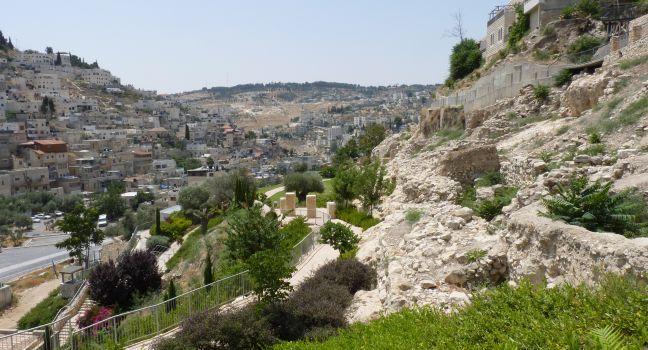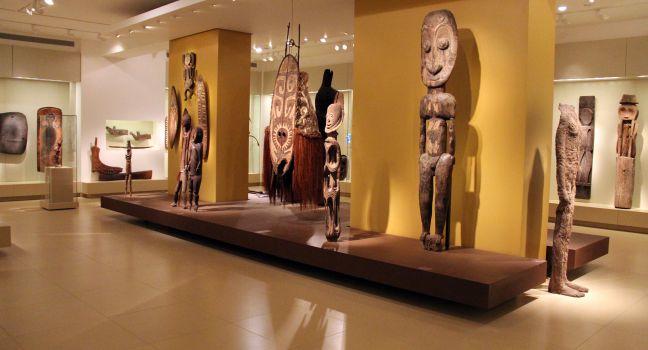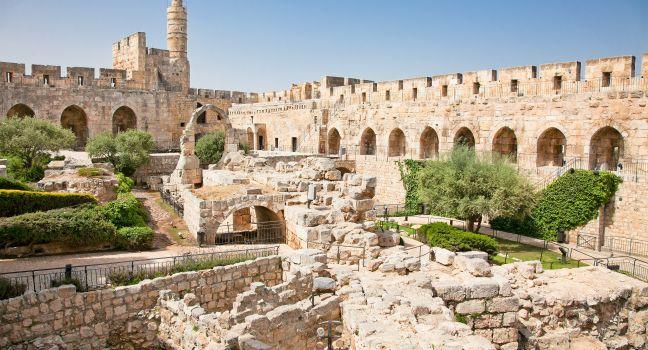City of David

Just south of today's Old City walls, the City of David was the core of Old Testament Jerusalem, built more than four millennia ago on a 15-acre spur over the vital Gihon Spring. It was given its royal Israelite sobriquet 1,000 years later, when the legendary King David conquered the city and made it his capital (II Samuel 5). Begin with the great rooftop observation point above the visitor center. Consider the 15-minute 3D movie, despite its ideological bias; it's a good historical introduction to the site, especially for kids (call ahead for English-language show times). Below the floorboards of the center are the excavated remains of a large building of the 10th century BC, identified by some archaeologists as King David's fortified palace (though others demur). A few flights of steps down from the center is Area G, dominated by a sloping structure of the same period, possibly a support ramp for the "palace" above. The most intriguing artifacts found here were 51 bullae, clay seal impressions no bigger than a fingernail, used for sealing documents or official correspondence. Some were inscribed, in ancient Hebrew, with the names of personages mentioned in the biblical book of Jeremiah. There is strong circumstantial evidence to suggest that the bullae were baked into permanent pottery by the Babylonian burning of Jerusalem in 586 BC.
Take the steps about a third of the way down the hillside: a small sign on the right directs you to Warren's Shaft and the descent to the spring. Charles Warren, a British army engineer, discovered the spacious, sloping access tunnel—note the ancient chisel marks and rough-cut steps—in 1867. The deep vertical shaft that drops into the Gihon Spring may not have been the actual biblical "gutter" or "water-shaft" through which David's warriors penetrated the city 3,000 years ago—it was apparently hewn in a later era—but an alternative access to the spring has kept the biblical story alive. Three centuries later, King Hezekiah of Judah had a horizontal tunnel dug through solid rock to bring the spring water safely into a new inner-city reservoir.
The tunnel—variously called Siloam, Shilo'ach, or Hezekiah's Tunnel—can be waded today. You will need water shoes or sandals, a flashlight (cheap LED ones are on sale at the visitor center), and appropriate clothing: the water is thigh-deep for the first few minutes, and then below the knees for almost the entire length of the tunnel (a 30-minute walk). The visitor center has lockers for your gear. In this very conservative neighborhood, it's advisable to wear covering over swimsuits when walking outside. The wade is not recommended for very small children or for claustrophobes of any age. If you don't fancy getting wet, you can still view the spring, and then continue through the dry Canaanite tunnel to emerge aboveground.
The tunnel ends in the Pool of Siloam, mentioned in the New Testament as the place where a blind man had his sight restored (John 9); the current pool is its Byzantine successor. From the exit, modern wooden steps take you down and over the large flagstones of a 1st-century-BC commercial street to the edge of an ancient pool unearthed in 2004 by city workers repairing a sewage pipe. Archaeologists exposed finely cut steps and two corners of the pool, apparently a large public mikvah, or Jewish ritual bath, for pilgrims who flocked here 2,000 years ago—and arguably the very pool of the Gospel miracle. Hezekiah's original pool remains hidden.
An underground Roman-period drainage ditch is the adventurous route back up the hill. For an additional fee you can continue still farther north through the ditch (bypassing the visitor center), to the Jerusalem Archaeological Park inside the city walls.
There is a shuttle van (NIS 5) from the pool up the steep hill back to the visitor center, but currently not from the dry exit.





